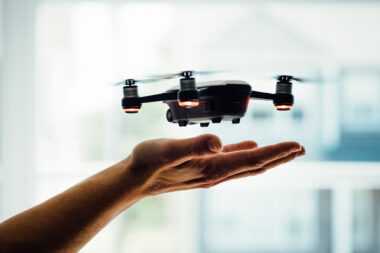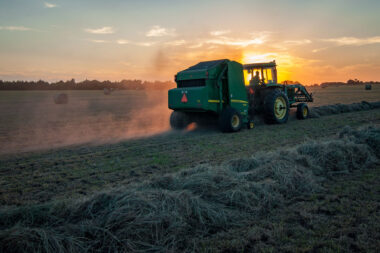Introduction:
Low flush toilets, or low flow toilets, are water efficient fixtures designed to minimize water usage during flushing. By employing advanced design and flushing technologies, these toilets provide effective waste removal while significantly reducing water consumption. This innovation addresses environmental concerns by promoting sustainable practices and aligning with global efforts to conserve water resources. Popular among eco conscious consumers, low flush toilets play a vital role in green building designs and contribute to the broader goal of water conservation.
Advances in the design of low flush toilets
- Dual Flush Mechanism:
- Many low flush toilets feature a dual flush mechanism, allowing users to choose between a low volume flush for liquid waste and a higher volume flush for solid waste.
- Technology: The dual flush system typically utilizes a dual valve or a split flush valve that regulates the release of water based on the type of waste being flushed.
- Pressure Assisted Flushing:
- Some low flush toilets employ pressure assisted flushing, where compressed air enhances the force of the flush to effectively clear the bowl with less water.
- Technology: A pressure vessel within the toilet tank stores compressed air, which is released during flushing to propel water into the bowl with increased force.
- Vacuum Assisted Flushing:
- Vacuum assisted flushing creates a siphonic action in the bowl, effectively removing waste with less water.
- Technology: A vacuum assist mechanism uses negative pressure to evacuate waste, reducing the reliance on gravity for efficient flushing.
- Optimized Bowl and Trapway Design:
- Advanced bowl and trapway designs ensure effective waste removal with minimal water usage.
- Technology: Smooth and glazed surfaces, as well as redesigned trapways, reduce friction and improve the flow of water, enhancing flushing performance.
- Water Efficient Flapper or Flushing Valve:
- The flapper, or flushing valve, is a crucial component in regulating the release of water from the tank to the bowl.
- Technology: Water efficient flappers or valves control the duration and volume of water released during each flush, contributing to water conservation.
- Gravity Flush Technologies:
- Gravity based flushing systems remain prevalent in low flush toilets, relying on the force of gravity to move water into the bowl.
- Technology: Innovations in trap way design and bowl shape optimize the gravitational force, ensuring efficient waste removal with reduced water usage.
- Smart Flush Sensors and Controls:
- Some modern low flush toilets feature smart sensors and controls for automated flushing and water level adjustment.
- Technology: proximity sensors and electronic controls monitor usage, adjusting flush volumes based on need and optimizing water efficiency.
- Adjustable Flushing Options:
- Adjustable flushing options allow users to customize the flush volume based on personal preferences or specific waste removal requirements.
- Technology: Adjustable flush settings may be controlled through buttons, dials, or smart interfaces, offering flexibility in water usage.
- Water Sense Certification:
- Low flush toilets meeting Water Sense certification standards adhere to specific performance criteria, ensuring both water efficiency and effective waste removal.
- Technology: Water Sense certified toilets undergo rigorous testing to validate their water saving capabilities while maintaining reliable flushing performance.
Working of low flushing toilets
The working of low flush toilets involves innovative design features and technologies aimed at optimizing water usage while ensuring effective waste removal. Here’s a step by step explanation of how low flush toilets operate:
- User Input:
- The flushing process begins when a user activates the flush mechanism, either by pushing a button, pulling a lever, or using a touchless sensor.
- Technology: User inputs may vary depending on the toilet model, ranging from traditional levers to modern touch sensitive controls.
- Flush Mechanism Activation:
- The chosen flush mechanism is activated based on user input, initiating the water flow from the tank to the bowl.
- Technology: Advanced low flush toilets may feature dual flush mechanisms, pressure assisted systems, vacuum assisted systems, or other water efficient technologies.
- Dual Flush Option (if applicable):
- In toilets with a dual flush option, users can select between a low volume flush for liquid waste and a high volume flush for solid waste.
- Technology: Dual flush toilets use a dual valve system that regulates the amount of water released, allowing users to customize the flush based on the type of waste.
- Pressure Assisted Flushing (if applicable):
- In pressure assisted flushing, compressed air is used to enhance the force of the flush, ensuring efficient waste removal with less water.
- Technology: A pressure vessel within the toilet tank stores compressed air. When activated, this pressure is released to assist in flushing.
- Vacuum Assisted Flushing (if applicable):
- Vacuum assisted flushing creates a siphonic action in the bowl, aiding in waste evacuation with reduced water usage.
- Technology: Negative pressure is created in the trap way, effectively pulling waste from the bowl. The vacuum assist mechanism optimizes the flushing process.
- Gravity Flush (if applicable):
- Gravity based flushing relies on the force of gravity to move water into the bowl, facilitating waste removal.
- Technology: The trap way and bowl design are optimized to maximize the gravitational force, ensuring efficient flushing without relying on additional pressure.
- Water Efficient Flapper or Flushing Valve:
- Water efficient flappers or flushing valves control the release of water from the tank to the bowl, regulating the flush volume.
- Technology: These components are designed to open and close efficiently, with algorithms determining the optimal duration to achieve water efficiency.
- Smart Flush Sensors and Controls (if applicable):
- Smart sensors and controls automate flushing and water level adjustments based on user presence and usage patterns.
- Technology: Proximity sensors detect user activity, and the algorithm dynamically adjusts flushing settings to optimize water usage.
- Adjustable Flushing Options (if applicable):
- Adjustable flushing options allow users to customize flush volumes according to preferences or specific waste removal needs.
- Technology: User interfaces, such as buttons or dials, provide input to the algorithm, which then adjusts the flush valve or other components accordingly.
- Flush Completion:
- The flush cycle concludes once the water has effectively removed waste from the bowl and the flush valve closes.
- Technology: Sensors or mechanical mechanisms detect the water level in the bowl, signalling the completion of the flush cycle.
Sensors and controls used
Sensors:
- Proximity Sensor: Detects the presence of a user near the toilet.
- Occupancy Sensor: Monitors the presence of a user within the restroom space.
- Pressure Sensor: Detects weight on the toilet seat, indicating user presence.
- Touch Sensor or Button: Allows users to manually initiate flushing or adjust settings.
- Water Level Sensor: Monitors the water level in the tank.
- Temperature Sensor: Measures the temperature of the seat surface (for heated seats).
- Humidity Sensor: Detects moisture levels in the air (for ventilation).
- Ambient Light Sensor: Adjusts toilet illumination based on ambient lighting conditions.
- Air Quality Sensor: Detects odors in the restroom for ventilation or air purification.
- Smart Flushing Algorithm: Analyses data from various sensors to optimize flushing based on user behaviour and waste volume.
Controls:
- Flush Button or Touch Control: Allows manual initiation of flushing.
- Dual Flush Mechanism: Provides options for low volume and high volume flushes.
- Pressure Assist or Vacuum Assist Control: Adjusts pressure for enhanced flushing efficiency.
- Adjustable Flush Options: Allows users to customize flush volume based on preferences.
- Smart Flushing Controls: Interfaces for adjusting smart flushing algorithms and settings.
- Heated Seat Control: Adjusts the temperature of heated seats.
- Ventilation Control: Manages ventilation systems based on sensor inputs.
- Illumination Control: Adjusts built in lighting features based on ambient light conditions.
- Odor Control or Air Purification Control: Manages systems to address restroom odors.
- User Interface Panel: A centralized panel for user interactions and settings adjustments.
Conclusion
Low flush toilets stand as a practical and environmentally conscious solution for water conservation. With innovative technologies and reduced water consumption, they not only offer cost savings to users but also contribute significantly to sustainable practices and environmental stewardship. The widespread adoption of low flush toilets reflects a commitment to responsible water management and a collective effort toward building a more water efficient and eco friendly future.



